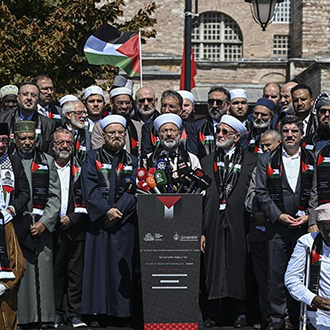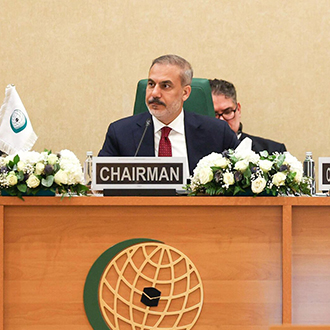Human beings, by their nature, have the capacity to prioritize their own wants and needs over the right to life of others. It is due to this characteristic of human beings that laws, regulations, and principles regarding the right to life have been established, shaping societal norms and trends.
For the first time in history, humanity articulated the concept of the right to life in the 1950 Universal Declaration of Human Rights. Today, alongside other rights like the right to travel and the right to a fair trial, the right to life is recognized and declared as a fundamental human right.
People cannot kill others nor can they kill themselves. Self-murder, i.e., suicide attempt, is also a violation of the right to life. The right to life has become a sacred right in this age. Therefore, when dealing with the right to life, it is necessary to know that there is a human-specific right to life and that there are rules and limitations related to it.
Humans are social beings and need to live together. What should people pay attention to when respecting the right to life of other fellow individuals in our shared world?
There exists a hierarchy of human needs often depicted as a pyramid. At its foundation lie physiological necessities, encompassing essentials like eating, drinking, reproduction, and shelter. These are the basic physiological needs of human beings. If you deprive people of these essentials, you also deprive them of their right to life. In addition, apart from the need for shelter and such, there emerges the need for trust and reciprocity, the need for affection and companionship, and ultimately, the need to find purpose and meaning in one's life.
Following these, people's beliefs and values come into play. Beliefs and values shape the framework for the purpose of life. To establish equilibrium in society regarding the purpose of life, the rules need to be clear and well-defined. A compass is needed to determine these rights to life. That compass is beliefs and values.
At this point, there are three types of norms. First and foremost is legislation, which represents norms established by the law. Secondly, we have social norms, which encompass traditions and values that are shaped by society, often reflecting cultural standards. Finally, there is the individual’s norms. These are the principles that reside within an individual's conscience. Examples include keeping one's promises, being honest, refraining from falsehoods, respecting the rights of others, and refraining from violating those rights. These norms found in one’s conscience are defined as morality. Morality ensures that people do not commit evil in secret. Social norms ensure that people do not do evil openly, and legal norms ensure that they do not commit crimes. In essence, a hierarchy exists to determine the standards by which we live our lives.
When we talk about the right to life, we are faced with a wide range of issues, including those that affect the living beings around us. However, presently, we are witnessing the deprivation of the right to life for numerous living beings worldwide. Actually, today other living beings appear to have the right to life at least as much as humans, if not more. What do you think can be done to raise individual and social awareness on this issue?
Francis Bacon, one of the Enlightenment philosophers, viewed nature as a rival, contending that nature is a challenge to be overcome and that humans should aim to dominate it. According to his argument, we can destroy nature. This idea paved the way for industrialization. As a result, the idea that humans can destroy nature and that only humans have the right to life emerged.
We are facing climate change as a result of denying other living beings their right to life. There are currently three threats facing humanity in the future. The first is economic inequality, the second is climate change, and the third is human isolation.
Climate change is related to a lack of respect for nature. Modernism is the driving force behind human destruction of nature and the perception of nature as a competitor and adversary. When nature is viewed as a rival, it becomes possible to exert control over it or even cause its destruction.
Power-oriented systems in the world pose the greatest threat to the right to life, while justice-oriented systems are its greatest ally. This is because only a system rooted in justice can establish and uphold norms, values, and beliefs. Consequently, ethical and cultural standards are imperative for the establishment and preservation of the right to life. The most important measure of these cultural standards is values. In other words, values are akin to traffic signs on the path of life. When the right values are in place, individuals are on the correct course, just as correct traffic signs lead the way. If the traffic signs are inaccurate, they can lead you astray and make you go the wrong way. Traffic signs do not exist for their own sake. In the same way, values do not exist for their own sake either. Values have a purpose, which is to guide individuals toward what is good, right, and beautiful in life.
What would you like to say about the right to life in the digital world in the context of the values we have mentioned?
The world is going through a digital revolution. There is serious digitalization all over the world right now. This digitalization is the industrial revolution of our age. Yet, there is a purposeless digitalization in society. Only if we direct this digitalization towards a certain purpose, will it benefit human beings. Therefore, the direction in which we steer this digital transformation is crucial. It can either lead to global collapse or pave the way for substantial improvements in our society and the world at large.
The most damaging thing about digitalization is the spread of dishonesty and selfishness. However, it's worth noting that the internet can also serve as a feedback mechanism to counteract malicious behavior. Therefore, digitalization presents an aspect of threat and an aspect of opportunity. The opportunity dimension of digitalization holds significant promise. If we use the Internet for good, righteous, and beautiful purposes, we have a chance to tell the whole world about the truths we possess. Digitalization is a great means of conveying the truth.
I do not view digitalization as a threat. It is a significant opportunity for individuals with a purpose in this era, but it can also be a substantial threat to those who prioritize their own interests.
It is a well-known fact that the steps leading to suicide are based on social and cultural reasons and that the psychological state is highly influential. Why do people give up their right to life?
When we compare human behavior with that of other living things, there are four concepts that only humans have that other living things do not. For example, only humans have the gene for seeking novelty. This is because human beings possess a sense of curiosity and wonder, which drives them to constantly seek out new experiences and challenges.
Another distinctive characteristic of humans is their relentless search for meaning. Unlike other creatures, human beings ponder questions like “What is the meaning of life? What is my purpose in life?” While other species primarily focus on basic survival needs like eating, drinking, reproducing, and eventually passing away, humans exhibit a unique drive. Although they grow older they aspire to live longer. They seek immortality. The third is the perception of time. No living being except humans perceives the past and the future. Although they live in the present, and in the moment, human beings have regrets about the past and questions about the future. This characteristic causes depression in humans. In fact, one of the biggest causes of depression is related to death.
The fourth distinctive trait relates to the contemplation of death. Unlike any other living beings, humans possess the knowledge of their own mortality. Some philosophers who grapple with the concept of death have even taken extreme actions like suicide, arguing that the pursuit of meaning is ultimately futile. This awareness of death sets human beings apart, yet they also harbor a desire for eternity. People who have a meaningful explanation for death can find happiness in it. For why should people who worship Allah as if He sees them every moment be afraid of death? These people have a deep sense of accountability after death beyond this life. What do wise people do? They invest in the hereafter recognizing that life is both a capital and a divine gift bestowed upon us. If we use our life well and increase this capital, when we come to the end of this life, we will enter the second life with great wealth. Thus, wise people are those who can use the capital of life in the best way. They are the people who can make their decisions in this life accordingly. Therefore, when we talk about life, we should not only think about this worldly life.









